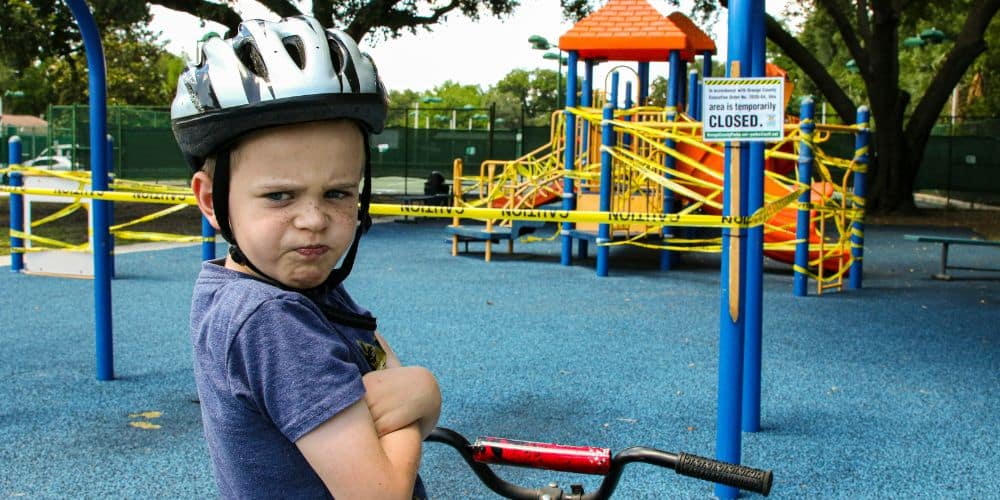As a dad, it’s amazing that you’re able to keep so many plates spinning in your life, especially when you consider the forces that are trying to send them crashing to the ground. Some of them are external enemies. Others hit closer to home—like learning how to help an angry child process his or her emotions in a healthy way.
Angry kids can knock a dad off his game and threaten the balance that keeps the plates spinning. That’s why it’s important for you to learn how to help an angry child. It’s a big deal for you, your child, and your entire family.
God’s Word is the way to patience and guidance in your life as a father and husband. Explore our YouVersion reading plans and let Scripture transform you and your family.
“All your children shall be taught by the Lord, and great shall be the peace of your children.”
Isaiah 54:13
Seven Keys for Helping Angry Kids
Over the course of your life as a dad, you’re going to teach your kids all kinds of lessons and skills. Some of them will come naturally. Some will require a little more work. But few of them will be more valuable than their anger management skills. The steps you take to help an angry child (or, even better, help them from becoming angry kids) will make things more peaceful at home and give them a leg up on dealing with stressful and frustrating situations when they become adults.
1. Set the right example
As you learn how to help an angry child, you’re going to realize how important you are to the process. You’ve got to set the standard for dealing with anger by the way you react to your own anger. A “do as I say, not as I do” approach never works with parenting, especially in relation to angry kids. So, ask God to help you work through your own anger issues and refuse to respond to your child’s anger with anger of your own.
2. Talk about feelings
Guys have a reputation of never wanting to talk about their feelings—or listen to anyone else talk about theirs. While that may be a stereotype, you might be one of those men who are uncomfortable with “feelings.” If so, you can’t let that get in the way of helping a child with anger issues. You’ve got to find a way to help them process their feelings verbally because that’s an important step in their healing.
One idea is to create a visual that can help your child talk about anger. For example, my daughter is a counselor, and she uses a chart with bright colors and emoji faces. Each of the faces represents a different emotion, and kids can point out the one that most closely matches their feelings in the moment. You could create a similar chart specifically for anger that allows you to start a conversation about your son or daughter’s feelings.
3. Identify triggers
While it can come on fast, anger really never “just happens.” Angry responses are sparked by something, and those things are known as “triggers.” If you can determine a trigger, you can move forward by addressing the root of the problem instead of just a symptom. Many triggers are related to frustration, unresolved problems, or unmet expectations. It might take some time to nail down what triggers your angry child; but once you do, you can start thinking about how to manage or avoid those experiences.
4. Enlist a professional
Depending on how deep your child’s anger runs, you might need to enlist a counselor or therapist. These professionals are trained to peel back the layers of the onion and help kids understand their anger issues more clearly. They also can provide solid advice and care plans that give an angry child tools for handling their negative emotions in a healthy way.
5. Establish appropriate boundaries
Sometimes, kids have a right to be angry. Injustice and sin should create a sense of anger in our hearts, just like they did for Jesus when He was on earth (Matthew 21:12-13; Mark 11:15-17; John 2:13-17). But in most cases, learning how to help an angry child means setting proper boundaries and consequences for their outbursts.
You might even consider asking your child to help set the boundaries and determine the consequences. In doing so, they can take ownership in the process. Setting and honoring such boundaries also can teach your child how to discern between proper anger and improper anger.
7. Don’t give in
When I was a kid, I remember seeing another child having a tantrum in a store. I told my dad, “I’ll bet he’ll be in trouble when he gets home.” My dad disagreed. He understood that part of the reason the boy was blowing up was because he knew he could get away with it. As a parent, you can’t give in to fear and manipulation when your kids get angry. They might be using their anger to get what they want or to test whether you will stand your ground. In their hearts, your kids want the security that comes from knowing you won’t give in, so love them enough not to back down.
7. Pray for and with your child
As great of a father as you are (and you are a great father if you’re focusing on how to help an angry child!), anger requires personal and spiritual transformation. That means you can’t fix things on your own. You need your heavenly Father’s help. So, pray for your angry kids, asking Him to give you wisdom and give them direction. Just as important, pray with your children, setting a great example of how to turn to God when they have a problem—with anger or anything else.
Give it time
You might feel pressure to be the “perfect” dad. The truth is, the perfect dad doesn’t exist outside of God in heaven. You’re not Him, and you’ll never be Him. So, as you figure out how to help your angry child, give yourself some grace.
This is a slow cooker problem, not a microwave problem. In other words, it’s going to take time. You won’t be able to push a button or two and make everything right. But the final outcome of helping a child learn to process anger is worth all the time you’ll invest. Most likely, it will take a while, but you’ll never regret it once you get to the other side.
Are you ready to be the dad God called you to be? Take the Godly Father Assessment to see how you’re doing and where you can improve as a father!












